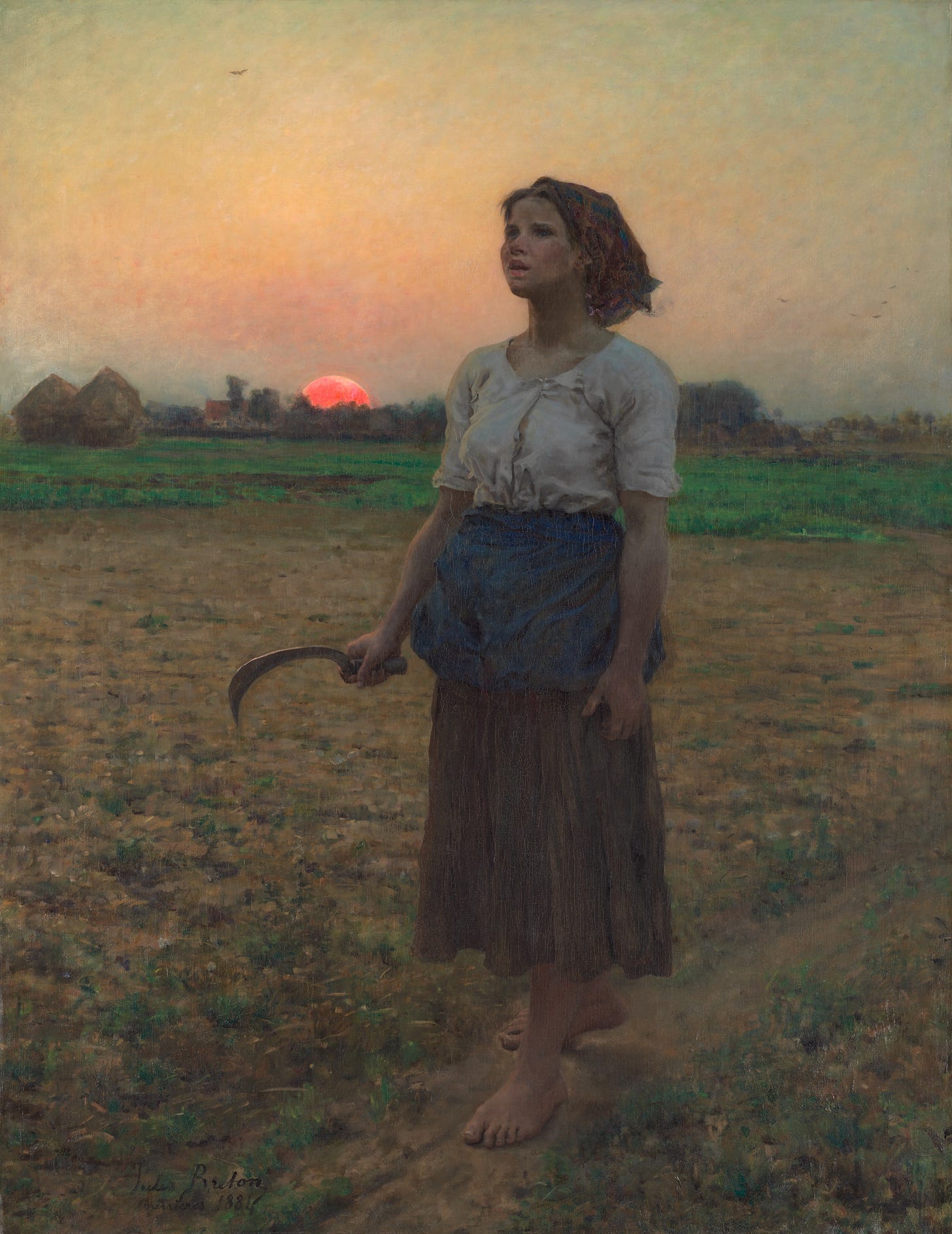Demystifying Art: The Song of the Lark
Conversations with Paintings and the Reality Beyond the Frame
When I visit to the Art Institute, I have conversations with the paintings. We talk about politics, aesthetics, philosophy, pop culture and the weather. I talk to them, and they talk back. It’s really quite simple.
This may seem much too whimsical an idea for your taste, but I assure you it is really quite an ordinary conversation. It is a simple exchange of ideals of the past juxtaposed to the the viewer’s embodied present.
To get a painting to talk to you, follow these steps:
We begin with the assumption that art has no value outside of aesthetics. Art is only a thing that used to be done before the invention of other forms of recreation. It is an impractical and frivolous pursuit in our time. No one can afford to buy any more of it, much less go to school to study it. For the purposes of our experiment today, all art is totally useless.
Bring a notebook and a pen to record simple impressions of the pieces that entice you. Record facial expressions, body language, props, scenery, and objects depicted. Take note of the general atmosphere of the piece. What is the figure doing? What does the placard tell you?
Outside of the museum, take note of simple observations of the people, places and things that evoke something in you.
Repeat. Revisit the painting again, if possible. Roll it over in your mind. Contemplate the life of the artist, the work of art itself and the reality of your own life.
This may take some practice, but anyone can do it. Here’s some impressions and observations of a painting I saw yesterday.
At the museum, I stumble upon “The Song of the Lark” by Jules Breton. In person, the atmosphere of the image is palpable: the heat, the call of the lark, the sweat on the brow, the tired feet and many hours ahead.
Clearly, the artist is saying something about the nature of labor. He is speaking to the humble existence of a peasant girl in 1884 and her chores. Her expression calls to mind the sudden, rapturous encounter with the natural world in a quiet moment of awareness.
However, this is only a painting on a wall. This is merely an illusion, having nothing to do with me, my life, and the present day. Had the artist had a camera, he might have simply taken a photo.
Still, we take our notes:
Scythe in hand, she treads a path in the field she reaped, the beckoning song of the lark signaling the beginning of our work.
The placard reads:
A lone peasant girl pauses her work to listen to a lark singing in the distance. Her emotional response to this moment of natural beauty is accentuated by the glow of the sun rising behind her, suffusing the landscape with golden light.
Jules Breton specialized in scenes of rustic life in the countryside. Having been raised in the rural village of Courrières in northern France, he admired the people living there for their resourcefulness and connection to nature and gained immense popularity by painting them in his idealized style
I retrieve my bag from coat check. I thank the worker. I wonder how much their rent is and how many hours they have to work to pay it.
Outside of the museum, there is a man holding a cardboard sign that says “Ugly People Need Help Too.” There are Venezuelan refugees selling candy.
At the foot of the steps, there are bucket drummers setting the rhythm of the crowd. Above and below, there are busses, cars, and trains moving 3 million bodies around. There are hundreds and thousands of busses and train cars moving millions of bodies who raise scaffolding, drive busses, and bag groceries. These are the bodies with tired feet that pay the mortgages of the few who stand around and say, “Nobody wants to work anymore.” There aren’t any more fields to reap or larks to sing.






This is one of my favorite paintings at the Art Institute! It's truly sublime. I'm not sure if you've heard this story yet, but supposedly Bill Murray ended up at the Art Institute one time when he was working and living in Chicago, and he wandered around the museum in the middle of a depressive episode as he contemplated whether life was even worth living. But then he ended up in front of 'Song of the Lark', and decided that it was worth living. The painting literally saved his life! A truly beautiful story.
https://speakola.com/arts/bill-murray-on-suicide-and-the-song-of-the-lark-2014
I love that you laid out how to talk to a painting. I love that.